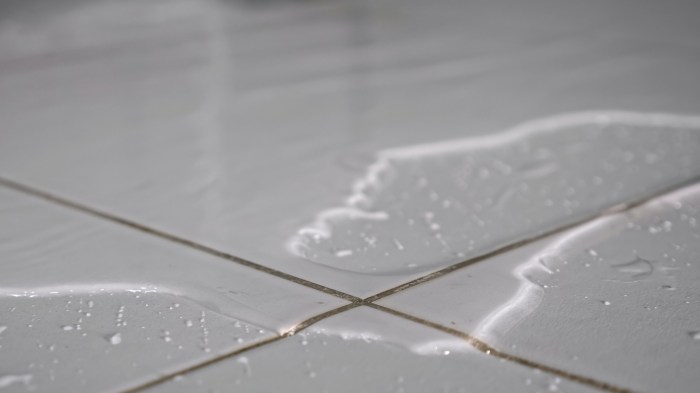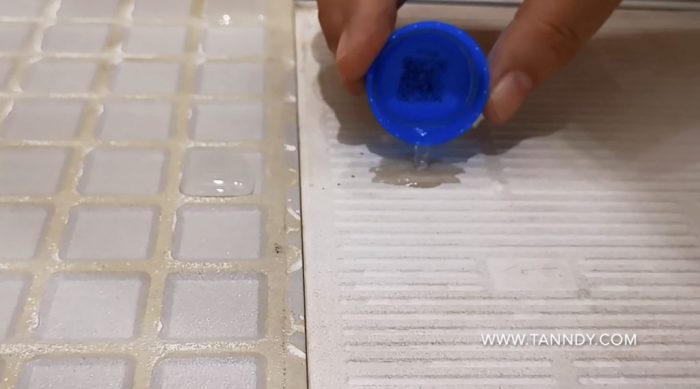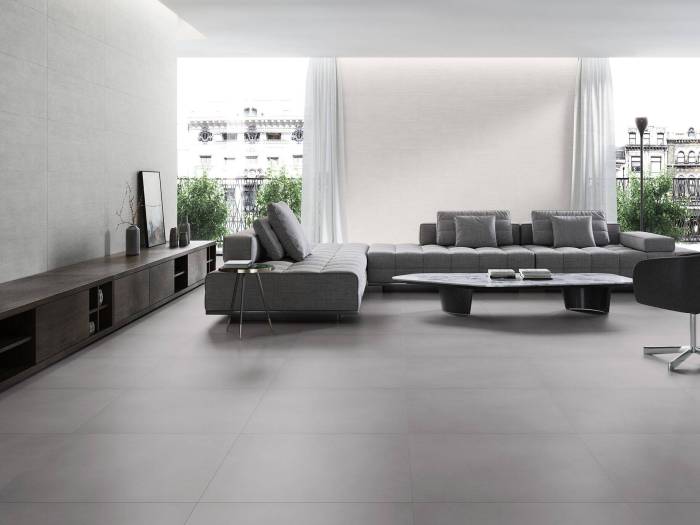When it comes to bathroom floor tiles, water absorption rates play a crucial role in determining their durability, longevity, and overall performance. In this comprehensive guide, we will delve into the world of water absorption rates, exploring the various factors that influence them and providing valuable insights for selecting the perfect tiles for your bathroom.
From understanding the different tile materials and finishes to examining installation methods and grout selection, we will provide you with all the essential information you need to make an informed decision. We will also showcase case studies of successful bathroom floor tile installations with low water absorption rates, highlighting best practices and innovative techniques.
Tile Materials
Bathroom floor tiles come in a variety of materials, each with its own water absorption rate. The water absorption rate is important because it affects the durability and maintenance of the tiles.
The most common types of bathroom floor tiles are:
- Ceramic tiles
- Porcelain tiles
- Natural stone tiles
- Luxury vinyl tiles (LVT)
Ceramic Tiles
Ceramic tiles are made from clay that is fired at a high temperature. They are a popular choice for bathroom floors because they are durable and easy to clean. Ceramic tiles have a water absorption rate of 3-8%, which means that they can absorb a small amount of water.
This can make them susceptible to staining and mold growth, especially in areas that are frequently wet.
Porcelain Tiles
Porcelain tiles are made from a finer clay than ceramic tiles and are fired at a higher temperature. They are denser and more durable than ceramic tiles, and they have a water absorption rate of less than 0.5%. This makes them less susceptible to staining and mold growth, and they are a good choice for bathrooms that are frequently wet.
Natural Stone Tiles
Natural stone tiles are made from natural materials, such as marble, granite, and slate. They are beautiful and durable, but they can be expensive. Natural stone tiles have a water absorption rate that varies depending on the type of stone.
For example, marble has a water absorption rate of 0.5-1%, while granite has a water absorption rate of less than 0.1%. Natural stone tiles should be sealed to protect them from staining and mold growth.
Luxury Vinyl Tiles (LVT)
Luxury vinyl tiles (LVT) are made from a durable plastic material that is designed to look like natural materials, such as wood or stone. They are waterproof and have a water absorption rate of 0%. This makes them a good choice for bathrooms that are frequently wet, and they are also easy to clean.
Tile Finishes
The finish of a bathroom floor tile plays a crucial role in determining its water absorption rate and overall aesthetics.
Tiles come in a variety of finishes, each with its unique characteristics:
Glazed Tiles
- Coated with a layer of glass or ceramic glaze, making them impervious to water and stains.
- Provide a glossy or matte finish, enhancing the visual appeal of the tiles.
Unglazed Tiles
- Lack a glaze coating, resulting in a more porous surface.
- Have a higher water absorption rate, making them less suitable for areas prone to water exposure.
- Offer a natural, earthy look, often used in rustic or traditional settings.
Polished Tiles
- Undergo a mechanical polishing process to create a smooth, reflective surface.
- Have a low water absorption rate, making them ideal for wet areas.
- Prone to scratches and etching, requiring careful maintenance.
Textured Tiles
- Feature raised patterns or designs on their surface.
- Provide a non-slip surface, making them suitable for areas where safety is a concern.
- Can have varying water absorption rates depending on the depth and porosity of the texture.
Installation Methods
The method of installing bathroom floor tiles significantly influences their water absorption rate. Let’s explore the various installation techniques and their impact on this aspect.
Tiles can be installed using three primary methods:
- Thin-set mortar: A cement-based adhesive applied directly to the subfloor, providing a strong and durable bond.
- Mastic: A pre-mixed adhesive that is spread onto the subfloor and tiles, offering flexibility and ease of application.
- Self-leveling underlayment: A liquid mixture that is poured onto the subfloor, self-levels, and creates a smooth and even surface for tile installation.
The water absorption rate of tiles is directly affected by the installation method:
Thin-set Mortar
- Thin-set mortar forms a solid bond between the tiles and the subfloor, minimizing the penetration of water into the tile.
- This method is recommended for areas with high moisture exposure, such as showers and steam rooms.
Mastic
- Mastic provides a flexible bond, allowing for some movement in the subfloor.
- However, it may not be as effective in preventing water penetration as thin-set mortar.
- Mastic is suitable for areas with moderate moisture exposure, such as powder rooms.
Self-Leveling Underlayment
- Self-leveling underlayment creates a smooth and even surface, ensuring proper tile adhesion.
- It helps prevent water from seeping through the subfloor and reaching the tiles.
- This method is recommended for uneven subfloors or areas with heavy foot traffic.
Maintenance and Care
Maintaining bathroom floor tiles properly is essential to minimize water absorption and preserve their appearance. Regular cleaning, sealing, and timely repairs ensure the longevity of the tiles.
Cleaning
Clean bathroom floor tiles regularly using a mild detergent or a specialized tile cleaner. Avoid harsh chemicals or abrasive cleaners, as these can damage the tile surface. Use a soft cloth or sponge to wipe down the tiles, paying attention to the grout lines.
Rinse thoroughly with clean water to remove any residue.
Sealing
Sealing bathroom floor tiles helps to create a protective barrier against water and stains. Apply a penetrating sealer to the tiles and grout lines as per the manufacturer’s instructions. The frequency of sealing depends on the type of tile and the amount of foot traffic the bathroom receives.
Repairing
If bathroom floor tiles become cracked or chipped, it’s important to repair them promptly to prevent further damage. Clean the damaged area thoroughly and allow it to dry completely. Use a tile repair kit or consult a professional for more extensive repairs.
Trends and Innovations
The world of bathroom floor tiles is constantly evolving, with new trends and innovations emerging all the time. When it comes to water absorption rates, the focus is on creating tiles that are not only durable and water-resistant but also aesthetically pleasing.
One of the most significant trends in recent years has been the rise of porcelain tiles. Porcelain is a type of ceramic tile that is made from a finer clay and fired at a higher temperature than traditional ceramic tiles.
This results in a tile that is denser and less porous, making it more resistant to water absorption.
Another trend that is gaining popularity is the use of large-format tiles. These tiles can be as large as 24 inches by 24 inches, and they create a more seamless and modern look. Large-format tiles are also less likely to absorb water, as there are fewer grout lines for water to penetrate.
Materials and Technologies
In addition to the latest trends in tile design, there have also been a number of innovations in materials and technologies that have improved the water absorption rates of bathroom floor tiles.
- Glazed tiles: Glazed tiles have a layer of glass or ceramic glaze applied to the surface. This glaze helps to seal the tile and prevent water from penetrating the pores.
- Vitrified tiles: Vitrified tiles are made from a mixture of clay and glass. This mixture is fired at a very high temperature, which results in a tile that is non-porous and water-resistant.
- Impregnated tiles: Impregnated tiles are treated with a water-repellent sealant. This sealant helps to fill the pores in the tile and prevent water from being absorbed.
Closure
In conclusion, understanding water absorption rates of bathroom floor tiles is paramount for ensuring a beautiful, functional, and long-lasting bathroom. By carefully considering the factors discussed in this guide, you can choose tiles that meet your specific needs and create a bathroom that will withstand the rigors of daily use while maintaining its aesthetic appeal for years to come.



